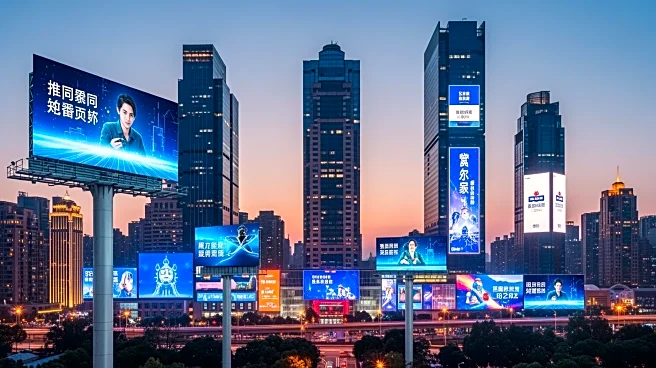What's Happening?
The Out of Home Advertising Association of America (OAAA) reports significant growth in the out-of-home advertising sector, nearing the $10 billion mark. Anna Bager, president and CEO of OAAA, attributes this expansion to the industry's resilience against
digital disruptions and its ability to engage audiences in physical spaces. The sector has seen a 3% growth in Q2, driven by digital out-of-home formats and the resurgence of transit and airport advertising. Bager emphasizes the unique advantage of out-of-home advertising in reaching audiences amidst changing media landscapes.
Why It's Important?
The growth of the out-of-home advertising industry reflects its adaptability and relevance in a digital age. As marketers face challenges in capturing attention online, out-of-home formats offer a reliable alternative by engaging consumers in real-world environments. This trend is significant for advertisers seeking effective ways to reach audiences, particularly in high-traffic areas like transit hubs and airports. The industry's expansion also indicates a shift in advertising strategies, with brands increasingly leveraging physical presence to enhance visibility and impact.
What's Next?
The out-of-home advertising sector is poised for further growth, with upcoming global events such as the FIFA World Cup and the Olympics expected to drive increased demand. As the industry continues to integrate digital technologies, advertisers may explore innovative formats and programmatic buying to enhance targeting and measurement capabilities. The focus on cultural and communal moments will likely intensify, providing brands with opportunities to align campaigns with significant events and trends.
Beyond the Headlines
The resurgence of out-of-home advertising highlights broader shifts in media consumption and advertising strategies. It underscores the enduring value of physical presence in a digital world, offering insights into consumer behavior and preferences. Additionally, the industry's growth may influence urban planning and infrastructure development, as advertisers seek prime locations for their campaigns. This evolution reflects the dynamic nature of advertising and its ability to adapt to changing environments.













